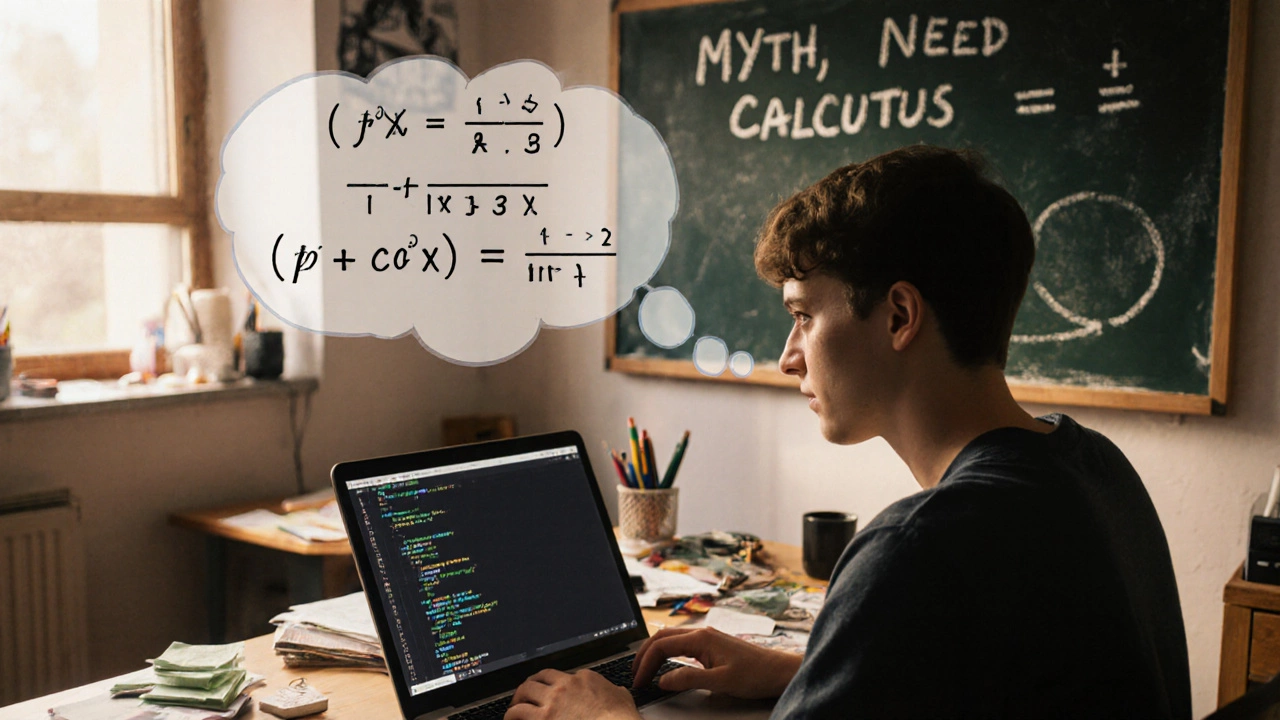
Does Coding Require Math? Myths, Facts, and How to Get Started
Explore if coding truly needs math, discover which fields demand specific concepts, and learn how to start programming with minimal math knowledge.
When working with coding skills and math, the blend of programming ability and mathematical reasoning that drives logical problem‑solving. Also known as computational thinking, it enables you to translate equations into code and code structures into formulas. Algorithmic thinking, the habit of breaking a task into ordered steps is a core part of this blend, while problem solving, the skill of finding efficient solutions to real‑world challenges benefits from both.
Why do these two subjects matter together? First, coding relies on math for loops, conditionals, and data structures—think of a simple for‑loop that adds numbers or a matrix multiplication that powers graphics. Second, math uses coding to run simulations, test hypotheses, and visualize data. This two‑way street creates a feedback loop where improvement in one area lifts the other. For example, mastering recursion in programming often deepens your understanding of factorials and combinatorics, while a solid grasp of probability helps you write better AI algorithms.
Another key player is STEM education, the integrated teaching of science, technology, engineering and mathematics. Schools that embed coding into math classes report higher engagement and better test scores because students see immediate, tangible results of abstract concepts. Learning to code a simple game that uses geometry lets kids visualise angles, while a data‑analysis script turns raw numbers into charts they can interpret. This hands‑on approach builds confidence and keeps learners motivated.
The link between coding and math isn’t just academic; it translates directly into job markets. Roles like data analyst, machine‑learning engineer, and financial programmer list both programming languages and mathematical competence as must‑haves. Employers look for candidates who can write clean, maintainable code (coding best practices, principles such as DRY, KISS, and SOLID that keep code readable) while also applying statistical models, linear algebra, or calculus to solve domain‑specific problems.
For students, integrating coding practice with math homework creates a portfolio of projects that showcase real‑world impact. Building a simple calculator app, automating a spreadsheet, or scripting a quiz generator are small steps that prove you can turn theory into practice. These projects also reinforce the semantic triple: coding skills and math encompass algorithmic thinking, coding skills require problem solving, and STEM education influences both coding skills and math. Each statement reflects how the concepts rely on one another.
If you’re just starting, focus on the most accessible languages—Python or JavaScript—because they have clear syntax and strong math libraries. Pair a short coding lesson with a math concept: write a loop that calculates the factorial of a number, then compare the result to the formula n!. This exercise links the abstract formula to a concrete implementation, solidifying both ideas at once.
Advanced learners can dive deeper by exploring algorithm design and computational complexity. Understanding Big O notation, for instance, is a math‑driven way to measure how code scales. When you optimise a sorting algorithm, you’re directly applying mathematical analysis to improve runtime. This cross‑disciplinary work is where many high‑paying tech jobs sit, and it’s why professionals who master both coding and math command premium salaries.
Below you’ll find a curated collection of articles that cover everything from the golden rule of coding to the toughest chapters in NEET biology, from eLearning on mobile phones to top‑paying vocational jobs. Each piece touches on at least one of the entities we’ve discussed—coding best practices, algorithmic thinking, problem solving, STEM education, or the math‑coding connection—so you can dive deeper into the exact area that interests you most. Browse the list, pick a topic, and start turning theory into practice today.

Explore if coding truly needs math, discover which fields demand specific concepts, and learn how to start programming with minimal math knowledge.